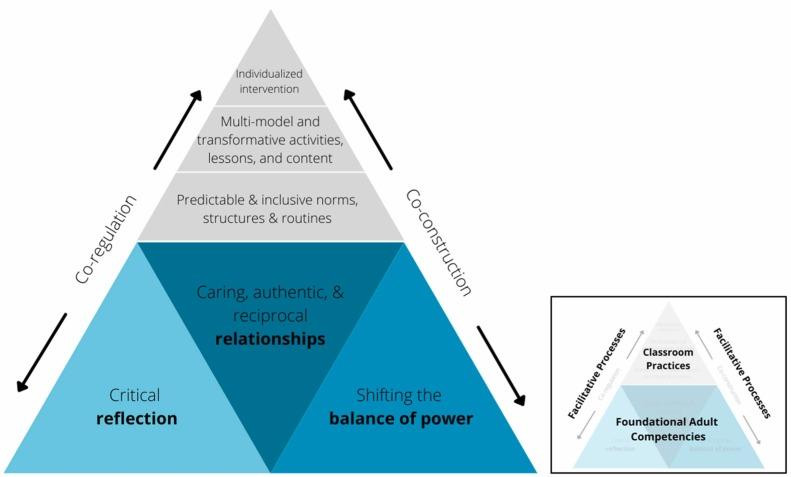Future Directions for SEL in Schools: Trends, Innovations, and Next Steps
Introduction
Social and Emotional learning (SEL) has become a critical pillar in modern education, empowering students to navigate the complexities of school life and the broader world. As we look ahead, the future directions for SEL in schools reveal a landscape rich with prospect, innovation, and necessary adaptation. In this article,we’ll examine emerging SEL trends,cutting-edge innovations,and practical next steps for educators and school leaders. whether you’re an administrator, teacher, or policy-maker, understanding these directions will help you nurture more resilient, empathetic, and successful learners.
The Growing Importance of SEL in Schools
SEL—defined broadly as the process through which youth and adults acquire and effectively apply the knowledge, attitudes, and skills necessary to understand and manage emotions, set and achieve goals, feel and show empathy, establish positive relationships, and make responsible decisions—has been proven to:
- Improve academic outcomes and classroom behaviour
- Enhance emotional intelligence and resilience
- Reduce emotional distress and behavioral problems
As our world becomes more interconnected and digitally complex, the demand for strong social and emotional competencies only increases. Schools are responding with renewed energy and purpose—moving towards embedding SEL best practices across curricula and cultures.
Key Trends Shaping the Future of SEL
forward-thinking educators and researchers have identified several key trends likely to shape the future of SEL in schools. Embracing these trends is essential for driving meaningful and lasting change.
1. Integration of Technology
- SEL apps and platforms: Edtech solutions like Peekapak, SAP Champions, and Second Step are making SEL curriculum delivery more interactive and scalable.
- Data-driven insights: Leveraging analytics to monitor student progress, engagement, and emotional well-being enables personalized support.
2. Culturally Responsive SEL
- Diverse content: SEL content is becoming more inclusive, reflecting the varying backgrounds, identities, and experiences of students.
- Equity-focused approaches: New frameworks ensure that SEL supports equity, disrupting bias and promoting social justice.
3. Family and Community Engagement
- Collaboration beyond the classroom: Schools are forging partnerships with families and community groups for multi-layered SEL support.
- Culturally relevant parental resources: Providing families with tools to reinforce SEL competencies at home.
4. SEL for Staff Well-being
- Professional growth: Prioritizing SEL for teachers and staff boosts both their well-being and their capacity to model skills for students.
- Systemic support: Institutions are embedding SEL into staff wellness programs, recognizing that emotionally healthy educators foster healthier learning environments.
5. Expanded Assessment of SEL Skills
- beyond academics: More schools use assessment tools to measure SEL competencies like self-management and relationship skills, linking growth to both academic and life outcomes.
- Continuous feedback: Technology facilitates real-time, formative SEL assessment—moving beyond just summative evaluations.
Innovations Transforming SEL Practice
As schools seek to keep SEL relevant and impactful, several innovative practices and tools are emerging:
- Virtual SEL classrooms: Online simulations and role-playing activities let students practice crucial social/emotional skills in safe environments.
- Gamification: Game-based learning helps motivate students and reinforce SEL concepts through play and competition.
- Mindfulness integration: Mindfulness practices are increasingly used to help students regulate emotions and reduce stress.
- Project-based SEL: Integrating SEL goals with real-world projects fosters collaboration and practical application of new skills.
- Peer mentoring: Older students or trained “SEL ambassadors” provide support and model key behaviors for younger peers.
Case Studies: SEL in Action
To better understand the impact of these future-directed strategies, let’s look at a few real-world examples:
1. Chicago Public Schools (CPS): System-Wide SEL Implementation
By embedding SEL into core academic lessons and daily practices, CPS saw not only improved student relationships and climate but also gains in academic performance. Their efforts include dedicated SEL coordinators, parent engagement initiatives, and partnerships with organizations like CASEL.
2. Austin Independant School District: Data-Driven SEL
Implemented comprehensive SEL monitoring systems that track both skill development and perceptions of safety and belonging. These insights inform everything from lesson design to professional development and equity work.
3. global Online Academy: SEL in Digital Learning
This digital academy integrates SEL seamlessly into all virtual courses, using reflective journaling, virtual advisory groups, and regular check-ins to ensure students feel seen and supported, regardless of physical location.
Benefits of Future-Ready SEL for Schools and Students
- Higher engagement and motivation: Students are more invested in their learning and behavior when SEL is integrated into classroom culture.
- Reduced conflict and bullying: Proactive SEL leads to safer, more supportive learning environments.
- Stronger academic outcomes: Both short and long-term studies identify links between SEL and achievement.
- Planning for the future: SEL builds critical 21st-century skills like teamwork, adaptability, and empathy.
- Better teacher satisfaction: Supporting educator well-being improves staff retention and morale.
Practical Steps and Next Moves for Schools
To harness the future directions for SEL,leaders and teams can start with focused,practical steps:
- Audit current SEL practices: Identify gaps and strengths in your school’s SEL offerings.
- engage all stakeholders: Involve students, families, and community members in shaping SEL priorities and implementation.
- Invest in SEL professional development: Offer regular, meaningful PD on new SEL trends and practices for all staff.
- Leverage technology mindfully: Use digital tools and assessment platforms to support, not replace, human connection.
- prioritize equity: Ensure SEL content, assessment, and support systems reflect and honor student diversity.
- Monitor, assess, and iterate: Regularly evaluate SEL programs for impact, making adjustments to sustain progress.
Conclusion
The future of Social and Emotional Learning in schools is bright—marked by innovation, inclusivity, and deeper integration across all facets of the educational experience. By staying informed about emerging trends, adopting innovative tools, and committing to actionable next steps, educators can ensure that SEL not only prepares students for academic success but also empowers them to thrive in life and lead with empathy and resilience.
As we move forward, let’s work together to build learning environments where every student can realize their full social and emotional potential.

